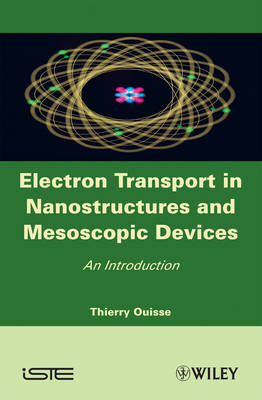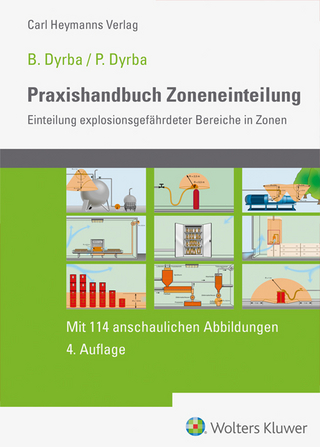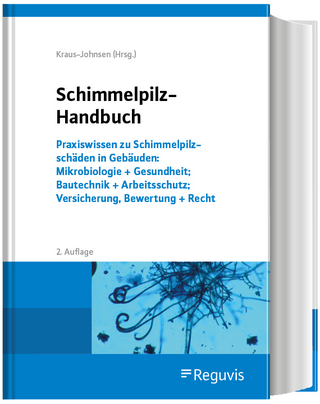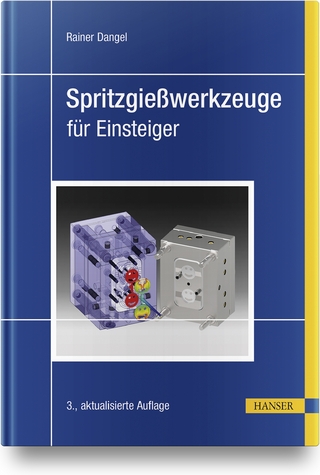
Electron Transport in Nanostructures and Mesoscopic Devices
ISTE Ltd and John Wiley & Sons Inc (Verlag)
978-1-84821-050-9 (ISBN)
Thierry Ouisse is the author of Electron Transport in Nanostructures and Mesoscopic Devices: An Introduction, published by Wiley.
Chapter 1. Introduction 1
1.1. Introduction and preliminary warning 1
1.2. Bibliography 7
Chapter 2. Some Useful Concepts and Reminders 9
2.1. Quantum mechanics and the Schrödinger equation 9
2.2. Energy band structure in a periodic lattice 22
2.3. Semi-classical approximation 25
2.4. Electrons and holes 27
2.5. Semiconductor heterostructure 30
2.6. Quantum well 31
2.7. Tight-binding approximation 43
2.8. Effective mass approximation 49
2.9. How good is the effective mass approximation in a confined structure? 55
2.10. Density of states 57
2.11. Fermi-Dirac statistics 60
2.12. Examples of 2D systems 62
2.13. Characteristic lengths and mesoscopic nature of electron transport 65
2.14. Mobility: Drude model 67
2.15. Conduction in degenerate materials 69
2.16. Einstein relationship 71
2.17. Low magnetic field transport 73
2.18. High magnetic field transport 75
2.19. Exercises 94
2.20. Bibliography 100
Chapter 3. Ballistic Transport and Transmission Conductance 103
3.1. Conductance of a ballistic conductor 103
3.2. Connection between 2D and 1D systems 109
3.3. A classical analogy 110
3.4. Transmission conductance: Landauer’s formula 111
3.5. What if the device length really does go down to zero? 114
3.6. A smart experiment which shows you everything 117
3.7. Relationship between the Landauer formula and Ohm’s law 120
3.8. Dissipation with a scatterer 123
3.9. Voltage probe measurements 127
3.10. Comment about the assumption that T is constant 129
3.11. Generalization of Landauer’s formula: Büttiker’s formula 130
3.12. Non-zero temperature 135
3.13. The integer quantum Hall effect 143
3.14. Exercises 150
3.15. Bibliography 157
Chapter 4. S-matrix Formalism 159
4.1. Scattering matrix or S-matrix 159
4.2. S-matrix combination rules 163
4.3. A simple example: the S-matrix of a Y-junction 164
4.4. A more involved example: a quantum ring 166
4.5. A final more complex example: solving the 2D Schrödinger equation 169
4.6. Exercises 181
4.7. Bibliography 182
Chapter 5. Tunneling and Detrapping 183
5.1. Introduction 183
5.2. Single barrier tunneling 185
5.3. Two coherent devices in series: resonant tunneling 189
5.4. Physical meaning of the terms appearing in the resonant transmission probability 194
5.5. Tunneling current 197
5.6. Resonant tunneling in the real world 199
5.7. Discrete state coupled to a continuum 201
5.8. Fano resonance 210
5.9. Fano resonance in a quantum-coherent device 212
5.10. Fano resonance in the real world 217
5.11. Exercises 219
5.12. Bibliography 224
Chapter 6. An Introduction to Current Noise in Mesoscopic Devices 225
6.1. Introduction 225
6.2. Ergodicity and stationarity 226
6.3. Spectral noise density and Wiener-Khintchine theorem 228
6.4. Measured power spectral density 230
6.5. Shot noise in the classical case 231
6.6. Why the shot noise formula is not valid in a macroscopic conductor 235
6.7. Classical example 1: a game with cannon balls 238
6.8. Classical example 2: cars and anti-cars 238
6.9. Quantum shot noise 240
6.10. Bibliography 247
Chapter 7. Coulomb Blockade Effect 249
7.1. Introduction 249
7.2. Energy balance when charging capacitors 251
7.3. Coulomb blockade in a two-terminal device 253
7.4. Coulomb blockade in a single-electron transistor 258
7.5. Single-electron turnstile 265
7.6. Coulomb blockade in the real world 265
7.7. Exercises 268
7.8. Bibliography 271
Chapter 8. Specific Interference Effects 273
8.1. Classical Lagrangian with a magnetic field 273
8.2. Classical Lagrangian without a magnetic field 275
8.3. Phase shift due to a magnetic field 275
8.4. Aharonov-Bohm effect in mesoscopic rings 276
8.5. 1D localization 280
8.6. Weak localization 283
8.7. Universal conductance fluctuations 286
8.8. Bibliography 289
Chapter 9. Graphene and Carbon Nanotubes 291
9.1. Introduction 291
9.2. Graphene band structure 293
9.3. Integer quantum hall effect in graphene 301
9.4. Carbon nanotube band structure 304
9.5. Carbon nanotube bandgap 309
9.6. Carbon nanotube density of states and effective mass 313
9.7. Electron transport in and quantum dots from carbon nanotubes 315
9.8. Exercises 321
9.9. Bibliography 323
Chapter 10. Appendices 325
10.1. The uncertainty principle 325
10.2. Crystalline lattice; some definitions and theorems 326
10.3. The harmonic oscillator 330
10.4. Stationary perturbation theory 336
10.5. Method of Lagrange multipliers 342
10.6. Variational principle 344
10.7. Wiener-Khintchine theorem 348
10.8. Binomial probability law 349
10.9. Random Poisson process 350
10.10. Transformation of the Cartesian wavevector coordinates into transverse and parallel components 351
10.11. Useful physical constants 353
Solutions to Exercises 355
Index 383
| Erscheint lt. Verlag | 27.6.2008 |
|---|---|
| Verlagsort | London |
| Sprache | englisch |
| Maße | 163 x 234 mm |
| Gewicht | 726 g |
| Themenwelt | Technik |
| ISBN-10 | 1-84821-050-7 / 1848210507 |
| ISBN-13 | 978-1-84821-050-9 / 9781848210509 |
| Zustand | Neuware |
| Haben Sie eine Frage zum Produkt? |
aus dem Bereich


